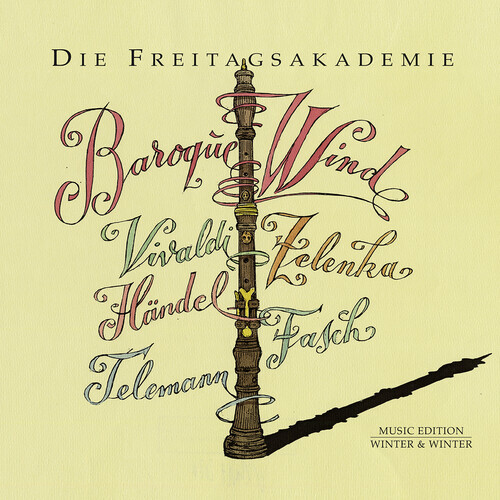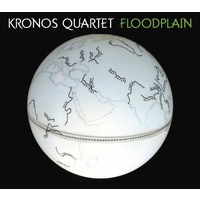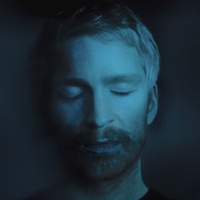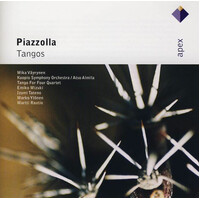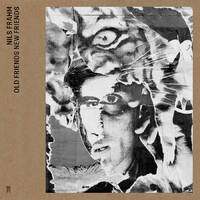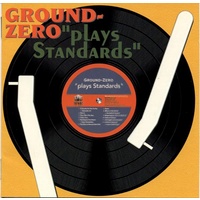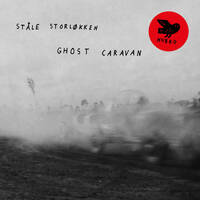Release date 2020
From today's perspective, the development of acoustic instruments seems to be almost complete. If we listen to classical and contemporary music, the instruments used are essentially those that became standard as early as the 19th century, and with the invention of the saxophone in the middle of the century one of the last great innovations took place. Apart from instruments developed with computer programs and digital sound generation, there are only a few inventions of today that are successfully finding their way into the world of music.
Major innovations in the instrument construction take place in the Modern Times. From the 15th century onwards, newly invented instruments decisively changed the world of music. This development is supported by the aristocratic authorities and, what must not be ignored, is also promoted and sponsored. Sounds never heard before are created. Often these instrumental new creations are also influenced by foreign cultures. For example, guitars, lutes and violins are actually of oriental origin. From the middle of the 15th century the harpsichord's heyday begins, which extends into the baroque era and beyond. Already around 1400 the construction of this avant-garde keyboard instrument began in Italy.
The wind instruments experienced great revolutions in the 17th and 18th centuries. At the court of Louis XIV, Jean de Hotteterre invented the oboe, which soon achieved an incomparable triumph in the world of music. And other inventive instrument makers helped the horns to achieve undreamt-of possibilities. The great composers of the baroque era enthusiastically and creatively adopted these tonal innovations. Thus compositions with new, almost orchestral sounds are created, which are performed with great success to entertain a mostly aristocratic audience.
These works still fascinate us today. Thus "Die Freitagsakademie", one of the most extraordinary baroque ensembles of the present day - under the direction of oboist Katharina Suske - opens the treasure chest of baroque wind music. The ensemble is exceptional because of its exquisite cast of soloists and the resulting richness of sound colours. For "Baroque Wind", two oboes, a bassoon, two horns and a continuo group create an intoxicating listening experience. The interpretations, daring dynamics and tempi, a dance on the high wire without a net, are also extraordinary. As was customary in the baroque era, there is no conducting, but rather the cooperation and listening of soloists who have one thing in mind: there is no early music!
This album presents selected compositions for oboe, bassoon and horns by Vivaldi, Zelenka, Handel, Fasch and Telemann. Unfortunately, these so enchanting works are rarely heard, because it is a real enrichment to experience these jewels of baroque literature. "Baroque Wind" offers varied, colourful and compositionally mature pieces with the stylistic features characteristic of their creators.
Unique among Vivaldi's instrumental works is the Sonata in C major, recently given catalogue number RV 801, which opens the album "Baroque Wind". Written for two oboes, a bassoon and basso continuo, it contains a wealth of concertante elements and is stylistically reminiscent of the Venetian composer's famous concerti. The unusual instrumental combinations open up complex sound spectra that were only made possible by the invention of the oboe.
The works of Fasch and Zelenka were created at German courts: Fasch was court Kapellmeister in East German Zerbst, Zelenka court composer and "church composer" in Dresden. The works of both composers are compositionally highly demanding, virtuoso and excitingly beautiful. It is not surprising that these composers are experiencing their highly justified renaissance. Not only are the oboe parts of these trio sonatas convincing with their distinctive, imaginative and graceful melodic lines, but the obbligato bassoon also breaks away in a highly original way from the traditional bass function.
The two arias by Handel are written for the typical instrumentation of English military music of the time: two horns, two oboes and bassoon. Handel composed these pieces in London, where they were played, for example, at the changing of the guard in St. James' Park.
The first aria uses music from "Teseo" written in 1712. In a biography of the Prussian King Friedrich Wilhelm I. we read that he especially loves Handel's operas and that he often has the music, arranged for a small wind ensemble, played for him. The king thrones all alone on one side of a long hall, the musicians stand on the other side with music stands and lamps. A sound and concert experience that we can now enjoy for ourselves with this recording.
In Telemann's Frankfurt creative period between 1712 and 1721, he created nine suites for two horns, two oboes and bassoon, with basso continuo added depending on the performance venue. Telemann composed these works for festivities at the Darmstadt court in the hunting lodges of Kranichstein, Mönchsbruch and Fürstenlager. Closely connected with hunting are of course the horns, which play a prominent role in the suite "La Chasse", both through their characteristic colouring and through motivic echoes of traditional hunting music. As a whole, the suite follows Telemann's manner, after which several contrasting dance movements are added to a three-part French overture: Two Passepieds, originally Breton lively peasant dances, are followed by the solemn, serious Sarabande, an exuberant Rigaudon, originally from Provence, and a cheerful final dance (Le Plaisir).
Special thanks to Radio SRF 2 and Norbert Graf for their support in making this recording, and to Moritz Achermann, who as an attentive editor co-authored this text.
Since 2009 "Die Freitagsakademie" and WINTER & WINTER have been working together to create a canon of special recording works from the baroque and classical periods. In 2017 "Die Freitagsakademie" is awarded the prestigious Diapason d'Or de l'Année (Diapason of the Year) in France for the album "Wiener Klassik“.
Katharina Suske, artistic direction, oboe
At the centre of her diverse activities as a musician, cultural worker and music mediator is the direction of the ensemble "Die Freitagsakademie", which she co-founded in 1993. She studied with Ku Ebbinge and Hans Peter Westermann, among others. Her chamber music and solo activities have brought her together with many renowned early music ensembles, including Venice Baroque, the Akademie für Alte Musik Berlin, I Barocchisti and the Zurich Opera Orchestra La Scintilla. In 2002 she stayed in New York for a longer period as a USA-scholarship holder of the canton of Bern. Katharina Suske successfully directs the programme planning for "Die Freitagsakademie" and is responsible for the selection of the soloists.
She is particularly interested in collaborations with artists from various fields such as contemporary dance, visual arts and literature. In addition, her self-conception as a musician includes an engagement with contemporary music.
2019 winner of the Music Prize of the Canton of Bern.
Stefano Vezzani, oboe
Graduated in modern oboe, studied baroque oboe with Paolo Grazzi (Milan), Ku Ebbinge (The Hague) and Marcel Ponseele (Gand). Specialization in double-reed instruments of the Renaissance. Graduated "cum laude" in musicology (University of Bologna) with a thesis on Renaissance double-reed instruments. Guest performances in Europe, Korea, Japan, Mexico, Ukraine, Uruguay, with conductors like Garrido, Goodman, Koopman, Kuijken, Malgoire, Minkowski and Savall. Teaches in Messina (wind ensemble), Palermo (historical oboe) and Vicenza (renaissance wind instruments and historical oboe).
Carles Cristóbal, bassoon
Starts learning the recorder before he focuses on the bassoon and studies. He graduated from the Schola Cantorum Baseliensis in 2002 and since then has worked with numerous internationally renowned ensembles such as the Freiburger Barockorchester, Kammerorchester Basel, Collegium Vocale Gent, Il Complesso Barocco, Orquesta Barroca de Sevilla, Le Talents Lyriques and Jordi Savall's Hesperion XXI both as soloist and chamber musician. Since 2018, he has held a professorship for baroque bassoon at the University of Geneva.
Christian Holenstein, horn
Studied horn and orchestra conducting in Switzerland and Finland. Solo horn player of the Bern Symphony Orchestra. As a guest he regularly plays with the Orchestre de la Suisse Romande in Geneva, the Zurich Opera Orchestra, the Camerata Bern and the baroque orchestra Europa Galante. As solo hornist he goes on tour with the Rundfunk-Sinfonieorchester Berlin through Taiwan, South Korea and Japan. As a soloist he gives concerts on the natural horn, post horn and alphorn. Christian Holenstein is also a sought-after lecturer; in 2014 his horn method "76 progressive Klangetüden für Horn" appeared.
Daniel Lienhard, horn
Studies at the Basel Music Academy with Jozef Brejza. From 1977 to 1980 member of the Lucerne Symphony Orchestra and 1980/81 of the Berlin Symphony Orchestra. Since 1985 he has been horn player in the Bern Symphony Orchestra. In 1983 the third volume of his horn bibliography, which is one of the standard works of horn literature, was published. Research for this publication led him to numerous European and American libraries, where he discovered many previously unknown works. In 1983 he founded the Dauprat Horn Quartet. For many years he has also played natural horn in ensembles and orchestras with period instruments.
Ján Krigovský, violone
Engagements with the Slovak Philharmonic Orchestra Bratislava, the Orchestra of the City Theatre Bratislava and the Bruckner Philharmonic Orchestra Linz. Participation in the original sound orchestras of the Vienna Academy, Orpheo Baroque Orchestra Linz, Basel Chamber Orchestra and other ensembles. 2012 foundation and direction of the chamber music ensemble Collegium Wartberg and the bass band Krigovsky. Performances at important festivals at home and abroad, including the Prague Spring, the Vienna Festival, the Salzburg Festival and other renowned festivals. Member of the Rafael Catala Trio (Jazz Ensemble) and the Alea-Bratislava-Piazola Quartet. Numerous performances of authentic Slovak folk music.
Jonathan Rubin, lute, guitar
Starts his career as a guitarist before focusing on the lute. In 1977 he obtains his diploma at the Schola Cantorum Basiliensis. Since then he has specialised in basso continuo on the lute and theorbo and has taken part in countless productions with Harnoncourt, Corboz, Malgiore and other renowned conductors. In 1986 he began to work with "Les Arts Florissants" under Christie and Agnew and took part in productions of baroque operas. Since 1980 he has taught lute at the Geneva Conservatory and gives master classes in Israel, Germany, Hong Kong and Australia.
Marek Čermák, organ, harpsichord
He received his musical education at the Academy of Performing Arts in Brno (orchestra conducting, harpsichord). His research focuses, in particular, on early music, with an emphasis on the second half of the 18th century, especially with regard to the historical performance practice of Moravian and Austrian music. He participates in various early music ensembles and directs his own ensemble "Musica figuralis", which contributes significantly to the rediscovery and performance of the music of Moravian and Austrian composers. As a continuo player (organ/harpsichord) he participates in several early music ensembles mainly in the Czech Republic, Austria, Slovakia, Germany and Italy. ![]()
(025091026326)
| SKU | 025091026326 |
| Barcode # | 025091026326 |
| Brand | Winter&Winter |
Be The First To Review This Product!
Help other Birdland Records users shop smarter by writing reviews for products you have purchased.

